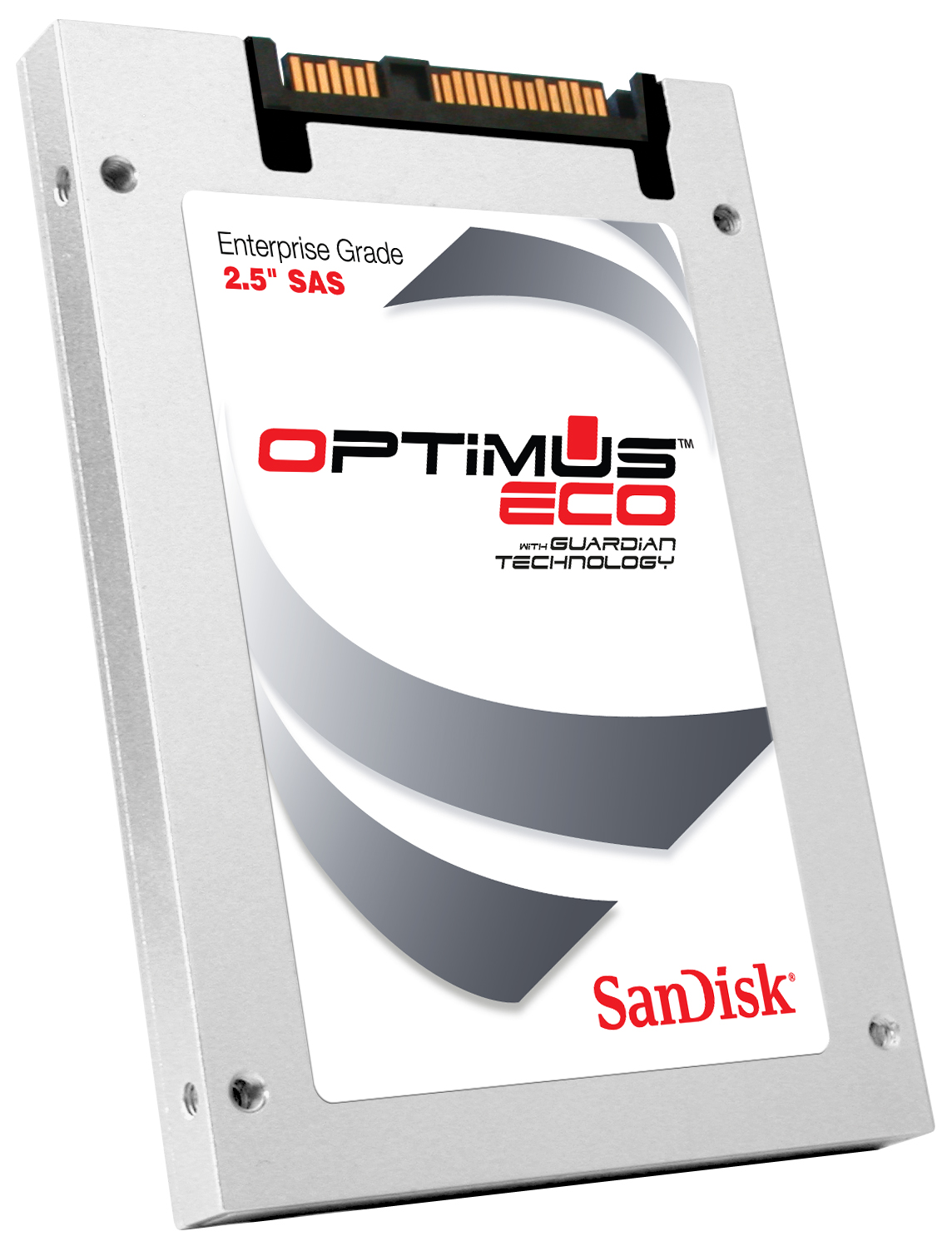SanDisk Optimus Eco SSD: A SAS Interface And Up To 2 TB Of Flash
Consolidation drastically changed the face of enterprise solid-state storage in 2013. One of the bigger moves was SanDisk's acquisition of SMART Storage Systems. Today, we're looking at the first branded SAS-based SSD to come from that purchase.
SanDisk Takes On Intel's Enterprise SSD Crown
Consolidation continues changing the face of the SSD industry. Just as we saw years ago with the mechanical disk space, your options are slowly being whittled down. The general consensus is that companies manufacturing NAND and those with impregnable NAND contracts will be the only ones left standing, aside from the scraps left for more niche players.
Probably the biggest challenge in SSD production is the procurement of NAND. When times are good, everyone wins. But, when the economy turns the other way and NAND supplies dwindle, smaller companies are the first to get cut off. Toshiba would never jeopardize its own products for a third party's, and neither would Samsung or Micron. SSD vendors are always one flash shortage away from disaster, which just isn't tenable.
And that's why the SMART acquisition makes so much sense. SanDisk got its hands on great IP and engineering resources, while SMART gained access to SanDisk and its joint manufacturing venture with Toshiba, Flash Forward. More likely than not, the Optimus Eco was already well on its way to launch before SanDisk stepped in. But now that the two companies are one, we're excited to see how future generations evolve into even more compelling hardware.
Speaking of which, the Optimus Eco is one of the best enterprise drives we have ever tested. It's hard to know where to begin. Steady-state read IOPS that approach 100,000 and 36,000 write IOPS are a good start, even if those figures are less than the flagship Optimus that leveraged 24 nm Toshiba NAND. Sequential performance beyond 550 MB/s, while maintaining great consistency, is another reason to admire what the Optimus Eco can do. A five-year warranty, power-loss protection, and respectable write endurance (for an MLC-based drive, at least) round out the package nicely for us. Finally, don't forget that the Optimus Eco is available in capacities as large as 2 TB. There's not much left for us to critique.
The only two factors that might cause hesitation are physical size and interface support. Although we don't expect Z-height to be problematic, the 9.5 and 15 mm enclosures could be too large for certain enclosures, particularly with newer storage systems offering 7 mm trays. The SAS connector could also keep the Optimus Eco out of more entry-level workstations. Really though, those are concerns about addressable markets, and not the Optimus Eco itself.
Finally, there's the question of whether SanDisk's Optimus Eco is fast enough to unseat Intel's SSD DC S3700 as our favorite all-around enterprise drive. We never reviewed SMART's Optimus, which is technically rated for slightly faster random write rates. However, the Eco is still incredibly quick. Of course, if you're looking for SAS connectivity, then there's no contest; the SSD DC S3700 is SATA-only. If you're looking at sequential performance, then again, the Optimus Eco wins. SanDisk even comes out by a very slim margin in random 4 KB workloads.
However, even though SanDisk does great things with its own NAND, the S3700's HET-MLC memory blows it away with the ability to shoulder 10 drive writes per day. That's a specification you need the original Optimus in order to match. With that point aside, I'd consider SanDisk's Optimus Eco and Intel's SSD DC S3700 to be peers, each performing certain tasks incredibly well and both deserving as much praise as an enterprise storage reviewer can give.
Get Tom's Hardware's best news and in-depth reviews, straight to your inbox.
Current page: SanDisk Takes On Intel's Enterprise SSD Crown
Prev Page Results: Enterprise Video Streaming Performance